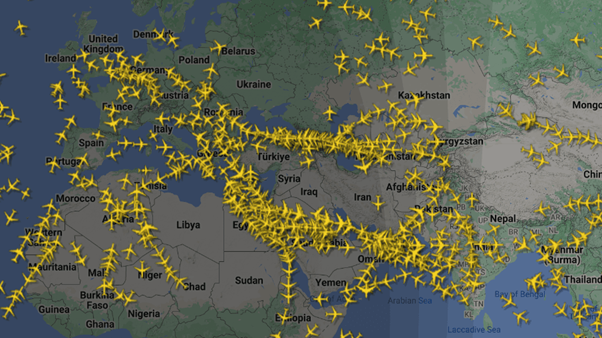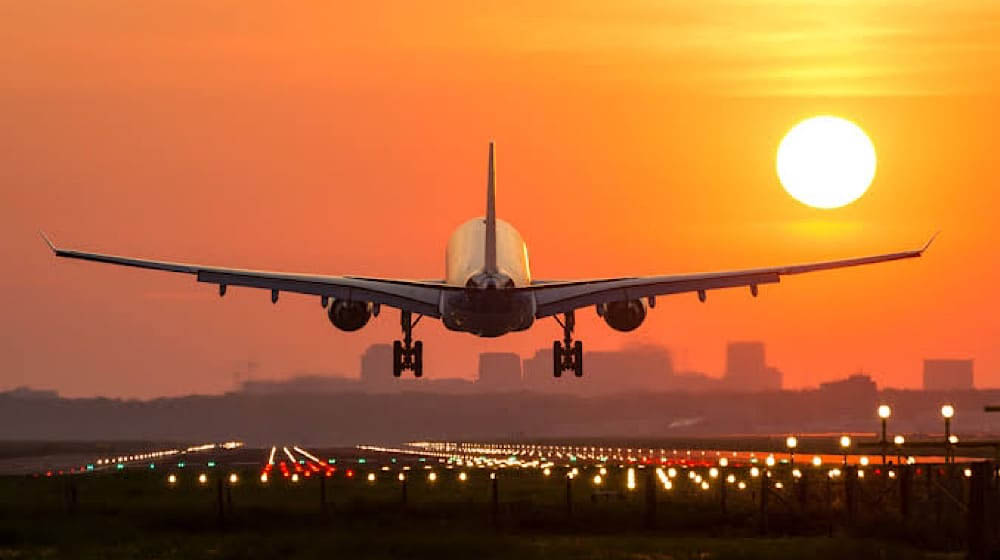 Log in
Log in

The growing conflict between Israel and Iran has seen to it that global air travel is in flux which in turn has disrupted large scale flight routes, shut down airport operations and left thousands of passengers in the Middle East and beyond in a state of delay. The piling up of tension has in turn set off a series of flight cancellations, delays and re-routing as airlines frantically try to keep to schedule at the same time as they try to avoid conflict zones.
In the global aviation which the Gulf region is a key player in we saw a large impact as hostilities grew. At the weekend Hamad International Airport in Doha, which is one of the world’s busiest, had to temporarily shut down. This came after Iran fired missiles at a U.S. military base in Qatar which they said was in response to the American strikes on Iranian nuclear sites over the weekend.
This abrupt cessation of airport operations caused great disruption to inbound and outbound flights. Although service resumed within a short while, the results lasted as we saw a formation of large numbers of stranded passengers, delay in take off of many scheduled flights, and more cancellations announced. Doha is a key stop over for many long haul travelers connecting between Europe, Asia and Australia.
Also at the same time Dubai International Airport in the UAE which is a large global transit hub saw service interruptions. Passengers were warned by airport authorities of more issues to come including that of delays and cancelations. Also out of the picture for some time was Abu Dhabi’s airport which reported great congestion and issues with flight schedules which in turn only grew the travel mayhem.
The conflict had a wide scope of which region it affected. In its wake airlines from around the world altered their plans. Air India reported it would put on hold for an indefinite time all of its services to the Middle East which also included some routes to North American eastern coasts and several European destinations, which they did for issues of safety and in the face of air space restrictions.
Japan Air also quickly reacted to the situation by canceling Tokyo to Doha flights. Also in play is the larger issue of the aviation industry which is very much on edge regarding the prospect of flying in areas which may become active conflict zones.
In over a dozen cases of flight cancellations and re-routing global air traffic has seen great disruption. Also of great concern is the role the Middle East plays as a bridge between continents. Daily we see almost 400,000 passengers pass through Doha and Dubai airports and another 80,000 through Abu Dhabi’s international airport. For many of us these airports serve as critical layover points during long international trips.
In the midst of the chaos were found to be hundreds of passengers which included travelers that had been left stranded at Doha’s Hamad International Airport. Rob Liddle, a member of the BBC staff which was out in Bangladesh on a report at the time shared his account of the situation. He reported of a state of uncertainty and frustration which travelers faced as they waited for info, also which many took to sit or lie on the floors of the airport lounges. Some who had left home for the long term tried to scrounge up some food or bedding. At first fear took over when reports of the missile strikes came out but as time went on the mood changed to a tense calm as people got used to the wait.
At times it was reported that a “complete and total” ceasefire had been reached between Israel and Iran at the word of former US President Donald Trump. That report brought some peace to international markets and also Israel went out to support the report.
However the relief was brief. The very next day Israel reported to us that Iran had broken the truce by way of attack. In turn Israeli Defense Minister Israel Katz gave the go ahead for what he reported to be “intense strikes” on targets in Tehran. Iran did not confirm these reports instead they said that they had not in fact launched any missiles at all and made it known that they would hit back at what they called “aggression.
This time around we saw a greater level of uncertainty which in turn fueled industry worries. The volatile environment made it hard for airlines to look to the future or to guarantee passengers’ safety and reliability.
According to Tim Atkinson from the aviation consultancy sector we see that issues like the Israel Iran conflict present a picture of very complex and integrated global air travel. He also compared the issue of disruption to a spreading fire which in turn explains how a problem in one area may quickly affect the whole aviation system.
John Strickland, also avionics expert, reported that we see a great many issues with the re-routing of flights around conflict zones. Longer flight paths over what may be considered safer regions like Turkey or Saudi Arabia cause an increase in fuel use which in turn raises what airlines must pay. Also we see that this puts extra stress on the system which in turn disrupts schedules, makes aircraft and crew unavailable for other routes and in the end delays service on routes which have no connection to the conflict zone at all.
Strickland also brought up the issue of safety which is of great import. Across the world governments have begun to issue travel alerts which in turn see them advise against all but essential travel to certain areas in the Middle East. These alerts in turn see airlines change their flight plans which we see play out in large scale cancellations of passenger flights. In such a volatile setting airlines are left to make operational decisions which may range from hourly to daily.
Compound this with the fact that air space is closed over many countries in the region. Since Israel began its military action we have seen not only Israeli air space but also that of Iran, Iraq, Syria, Lebanon, and Jordan’s skies made off limits to commercial traffic. That which we see is a stretch of the Middle East which daily plays host to over 1,400 flights which travel from Asia to Europe.
With that main route closed off airlines have to reroute flights north over Turkey or south over Saudi Arabia. Also these alternative routes are very congested which in turn puts more stress on regional air traffic control and flight operations.
To add to the issue, over Russia and in Ukraine air space is at present off limits to most airlines because of the war which is still going on, which in turn leaves few options for us to re-route long haul flights. Also we are seeing international air traffic funneled into very narrow paths which in turn is causing issues of traffic density, safety and delays.
The current situation reveals how vulnerable the aviation industry is to geopolitical tensions. While aviation authorities and airlines are experienced in managing short-term crises, prolonged or escalating conflict can have lasting effects on operations, ticket prices, and traveler confidence.
This incident also serves as a grim reminder of past tragedies. According to data from Osprey Flight Solutions, at least six commercial airliners have been unintentionally shot down since 2001, with three other near misses. One of the most notable was the downing of Malaysia Airlines Flight 17 over Ukraine in 2014, which killed all 298 passengers and crew on board.
With memories of such events still fresh, aviation authorities remain vigilant. The current conflict underscores the critical importance of situational awareness, rapid decision-making, and international cooperation in ensuring passenger safety.
For now, travelers can expect ongoing disruptions, rerouted flights, and shifting airline schedules as the situation in the Middle East continues to evolve. The hope for a lasting peace remains, but until stability is restored, the skies above the region will remain uncertain and heavily monitored.



